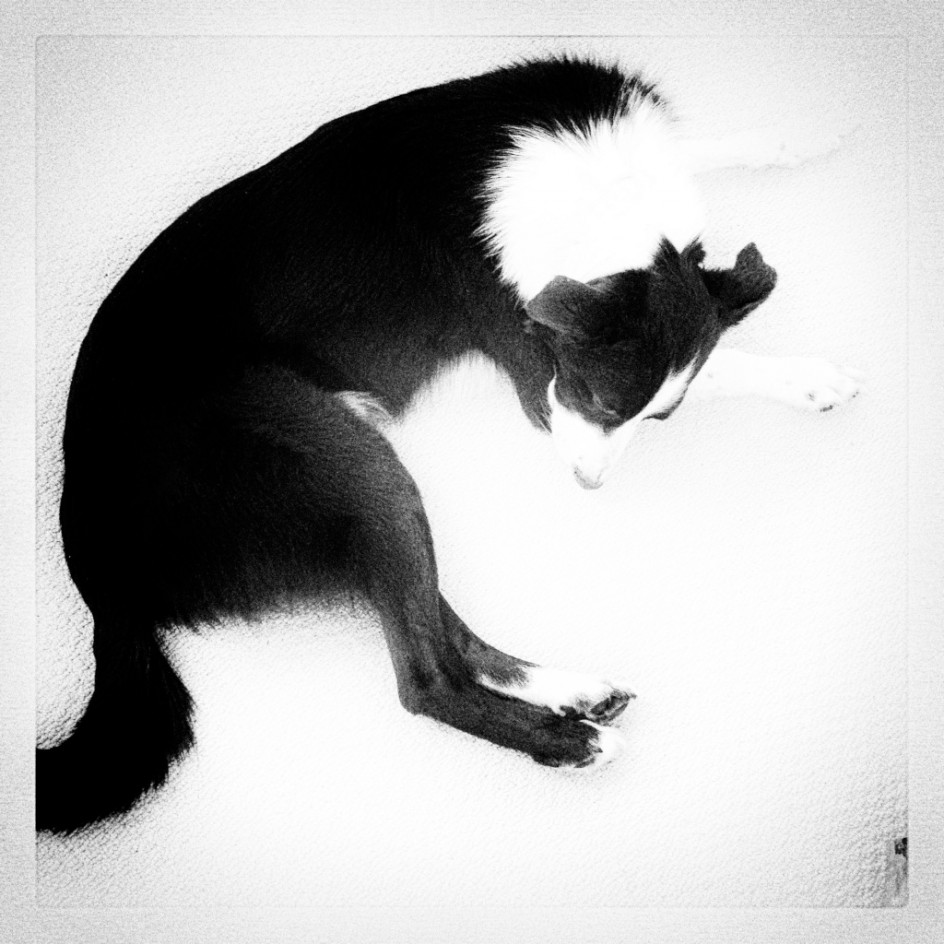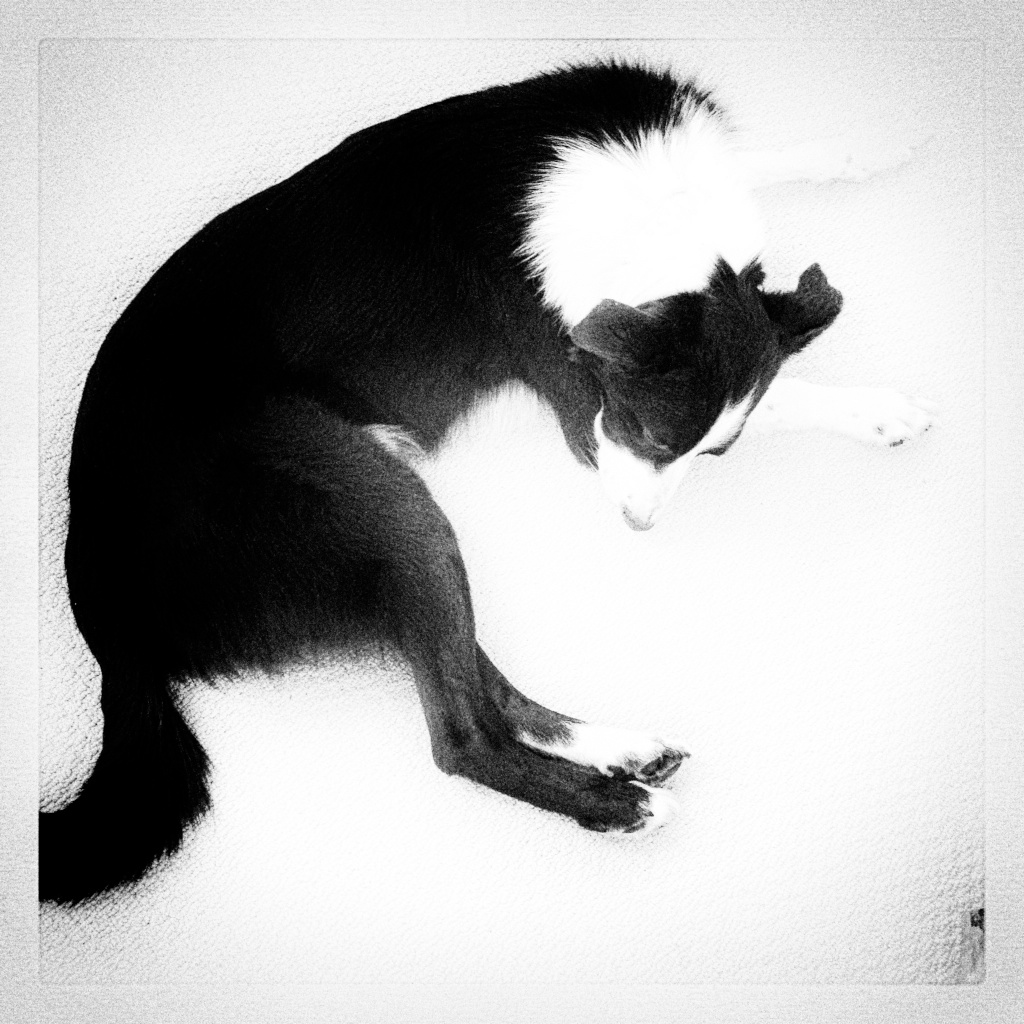
It is so easy to mess up a dog, and it requires so much thought and patience not to that it is very difficult for people to figure out. Red is a very eager to please dog, and like most border collies he has so many quirks that require me to stop and think. He is terrified of linoleum surfaces and each time we come across one I need to stop, get ahead of him, softly urge him forward and wait for him to take a breath and lunge forward. If I get impatient, or speak loudly or move too quickly he freezes and goes backwards.
For days now, when we left him out the back door, he has balked, turning around, freezing or refusing to move forward. He has gone out this door a thousand times, why not now? I started to get impatient, to pull him by his collar and I stopped, stood still for a bit and thought about this. What was the problem? What was he seeing? It hit me in a flash. I was standing behind him, not ahead. Red has been training as a working dog and stands to the left or right of to receive the “come bye” and “away to me” commands. This is how he knows whether to go clock-wise or counter-clockwise. It is the launch position, a critical position for a trained working dog. Red was waiting for me, not balking.
Once I figured this out, I just went ahead of him, and he scooted out the door with no problem. To test it, I stood behind him and he balked. We had been thinking he was strange, odd, or even headstrong, all human terms used to describe our own feelings. He was in fact, just being the great dog that he is. Another valuable reminder to me: don’t mess up a dog by making a lot of human assumptions about them. Stop and think, be patient and calm. And the first step in not messing up a dog is this: what am I doing wrong, not what is the dog doing wrong? What can I do to communicate what I want clearly and calmly?
What is really happening with the dog, rather than assuming I know what is happening. It is almost always about us, not them. I have been given the gift of an extraordinary dog, and I will not mess him up.

